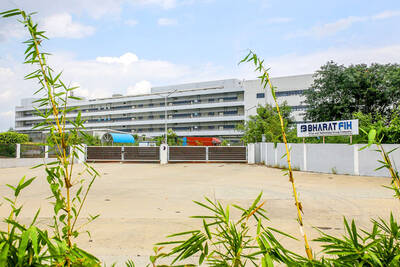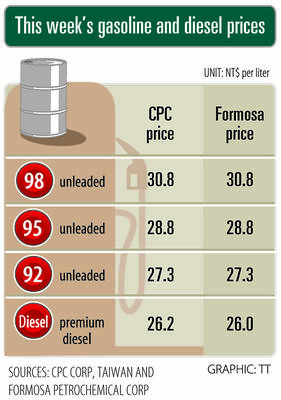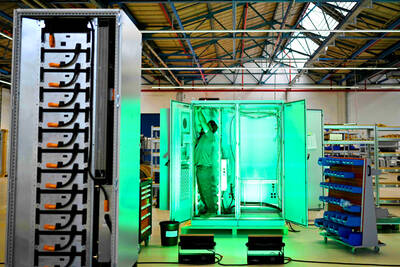As US drugmakers face growing resistance to the high price of cutting-edge treatments, a handful of companies are working on a new payment model that rewards them for the long-term performance of their medicines.
The effort, industry executives said, is being led by firms developing so-called gene therapies, which aim to cure inherited diseases like hemophilia by “fixing” the single faulty gene responsible for the disorder.
They include BioMarin Pharmaceutical Inc in San Rafael, California, and Sangamo BioSciences Inc in Richmond, California.
If these new hemophilia drugs and others like them succeed, a one-time infusion could replace the need for frequent, life-long injections of blood clotting proteins that can cost up to US$300,000 a year for a single patient. These existing treatments, including Pfizer Inc’s Xyntha and Baxter International’s Advate, are expected to command annual sales of more than US$11 billion by next year.
Drugmakers contend that a one-time cure, even at a price of more than US$1 million, would save money over the long term, but there are concerns that health insurers will balk at covering that kind of upfront cost.
“The place that we are moving toward is more of a pay-for-performance type of strategy,” Sangamo chief executive officer Edward Lanphier said. Under this model, the price would be amortized over a period of time and contingent on proof that the treatment is effective and safe.
The annuity-like payments would be stopped if medical testing, such as the level of clotting protein measured in a patient’s blood sample, showed that the therapy was not working.
Many barriers remain to implementing such a model, and the drugs for which it is being considered may not reach the market for several more years, if at all. Since Americans often switch health insurers, contracts — or even legislation — would be needed to require payers to pick up the ongoing tab for patients who change their coverage.
However, the interest in new payment models reflects the healthcare industry’s intention to find new ways to bolster profits as insurers push back against drug prices. Some backers of the new model say the payment streams could eventually be packaged and sold to investors, as happens now with securities backed by financial assets like credit card receivables.
“Our approach to this important funding-benefit question is to establish a financing vehicle where the relatively large upfront cost is amortized in conjunction with the benefit of these innovative, curative or preventative therapies,” said Michael Meyers, managing director and head of investment banking at T.R. Winston & Co, which is discussing such funding models with pharmaceutical and biotechnology companies.
Troyen Brennan, chief medical officer at CVS Health Corp, the second-largest US pharmacy benefit manager, is supportive of such efforts.
“Some sort of model where there was a partial payment over time could work well,” Brennan said in an interview.
Gene therapy has been a target of Big Pharma for more than 20 years, but research has been dogged by a series of disappointments and safety concerns. More recent scientific advances have paved the way for the potentially life-changing treatments.
No gene therapies have been approved in the US, but Europe approved its first gene therapy last year. Glybera treats a rare disorder that clogs the blood with fat and has been cleared for reimbursement in Germany at a price of 850,000 euros (US$963,000), or around US$1 million. It will be sold for a one-time payment because it is too difficult to measure how well it works, said Joern Aldag, CEO at Dutch biotech firm UniQure NV, which developed Glybera.
Aldag said gene therapies for larger patient populations in development at UniQure, including hemophilia and congestive heart failure, would likely be priced on an amortized basis.
“Gene therapy may be an initial very high burden for the healthcare system,” Aldag said. “The general consensus is that asking for a one-off payment of over a million dollars becomes unacceptable.”
However, insurers are much less willing to foot that kind of bill for drugs used in large numbers of patients. Last year, they pressured Gilead Sciences Inc to cut the US$1,000-per-pill cost of its new hepatitis C drug, saying the cost of treating more than 3 million Americans infected with the virus was unacceptable. Gilead said recently that it is discounting its prices by nearly 50 percent.

SETBACK: Apple’s India iPhone push has been disrupted after Foxconn recalled hundreds of Chinese engineers, amid Beijing’s attempts to curb tech transfers Apple Inc assembly partner Hon Hai Precision Industry Co (鴻海精密), also known internationally as Foxconn Technology Group (富士康科技集團), has recalled about 300 Chinese engineers from a factory in India, the latest setback for the iPhone maker’s push to rapidly expand in the country. The extraction of Chinese workers from the factory of Yuzhan Technology (India) Private Ltd, a Hon Hai component unit, in southern Tamil Nadu state, is the second such move in a few months. The company has started flying in Taiwanese engineers to replace staff leaving, people familiar with the matter said, asking not to be named, as the

The prices of gasoline and diesel at domestic fuel stations are to rise NT$0.1 and NT$0.4 per liter this week respectively, after international crude oil prices rose last week, CPC Corp, Taiwan (台灣中油) and Formosa Petrochemical Corp (台塑石化) announced yesterday. Effective today, gasoline prices at CPC and Formosa stations are to rise to NT$27.3, NT$28.8 and NT$30.8 per liter for 92, 95 and 98-octane unleaded gasoline respectively, the companies said in separate statements. The price of premium diesel is to rise to NT$26.2 per liter at CPC stations and NT$26 at Formosa pumps, they said. The announcements came after international crude oil prices

STABLE DEMAND: Delta supplies US clients in the aerospace, defense and machinery segments, and expects second-half sales to be similar to the first half Delta Electronics Inc (台達電) expects its US automation business to remain steady in the second half, with no signs of weakening client demand. With demand from US clients remaining solid, its performance in the second half is expected to be similar to that of the first half, Andy Liu (劉佳容), general manager of the company’s industrial automation business group, said on the sidelines of the Taiwan Automation Intelligence and Robot Show in Taipei on Wednesday. The company earlier reported that revenue from its automation business grew 7 percent year-on-year to NT$27.22 billion (US$889.98 million) in the first half, accounting for 11 percent

A German company is putting used electric vehicle batteries to new use by stacking them into fridge-size units that homes and businesses can use to store their excess solar and wind energy. This week, the company Voltfang — which means “catching volts” — opened its first industrial site in Aachen, Germany, near the Belgian and Dutch borders. With about 100 staff, Voltfang says it is the biggest facility of its kind in Europe in the budding sector of refurbishing lithium-ion batteries. Its CEO David Oudsandji hopes it would help Europe’s biggest economy ween itself off fossil fuels and increasingly rely on climate-friendly renewables. While